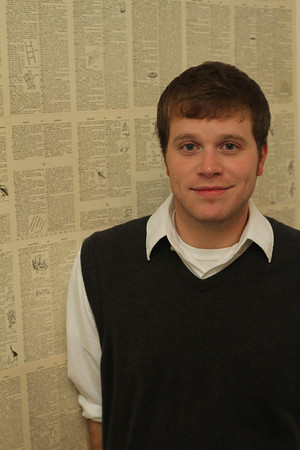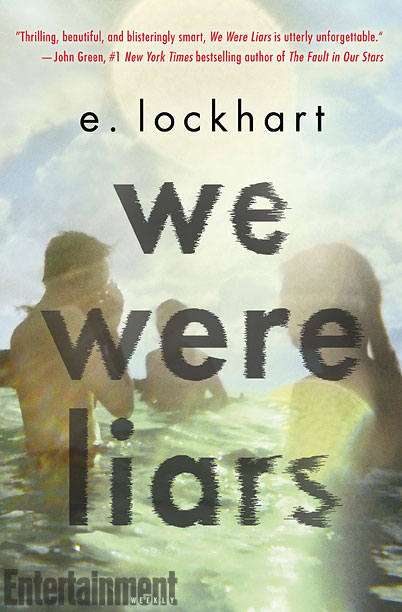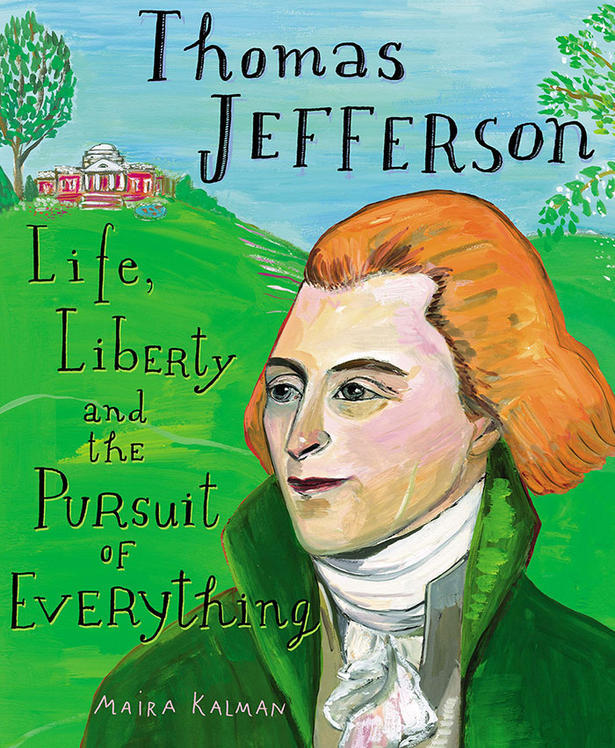As it got closer to the day of the interview, however, I started having second thoughts. Many people, myself included, consider Chris Raschka to be a genius, and I wondered if he would be one of those brainy folks who can be (sometimes unknowingly) painfully brusque to those less gifted in the intelligence department. I started getting cold feet, especially now that the interview had morphed into lunch; Chris would be doing a program for several dozen kids gathered at Politics & Prose Bookstore in DC, and then head across the street for a luncheon interview with me.
I shouldn't have worried. After an initial mix-up about where we were meeting, Chris, who is 55, bounded into the restaurant with a grin and a porkpie hat perched on his head. He had just been using it as a prop at the Politics & Prose event, where he led an interactive program designed to introduce elementary school students to the unique music and life of musician Sun Ra, the subject of Chris' newest book. Much to my relief, it turned out Chris is an incredibly nice person and quite easy to talk with, so I could relax and actually enjoy the interview.
Over lunch, we talked about how Chris got into the world of children's literature, his love for jazz, how he works, and, of course, about his new picture book, The Cosmobiography of Sun Ra (Candlewick Press, $15.99, ages 6-9). Born in the United States, Chris spent some of his childhood in Austria, his mother's homeland. Chris enjoyed drawing and playing the viola as a child, but he also loved nature, especially animals. Chris graduated from St. Olaf's College with a biology degree, fully intending to become a zoologist. Before attending graduate school, however, he took time off and worked as an aide for physically handicapped children in St. Croix and in Europe. It was an intense experience that made Chris begin to consider going to medical school. So he applied and was accepted at the University of Michigan Medical School; he also got married. Chris put off the start of medical school for two years ("I think I got their first and last two-year deferment") so he and his wife could do Peace Corps work.
 |
| Credit: Catherine Wink |
Over the years, meanwhile, Chris had begun more seriously doing art, first inspired by a "wonderful art professor" at St. Olaf's. It became more and more clear to Chris that being an artist was what he wanted to do, but it seemed totally impractical. Still, the day he was to finally start classes at the University of Michigan, he called up the school and told them he'd decided against a medical career. "I jumped off the cliff," he laughed. His wife got a teaching job and Chris started looking for a job that would help pay the bills while he built up his career as an artist. "I opened the paper and looking for the first job that seemed reasonable," he recalled. He found one doing administrative work in a law firm for 25 hours a week. "I learned a great deal about the law," Chris said. He also learned of a journal, published by the Michigan Bar Association, that needed an illustrator. Chris got the job.
During his time living in Ann Arbor, Chris went into the original Borders Bookstore one day and happened upon a children's picture, "The Pup Grew Up!," which featured illustrations by Vladimir Radunsky. "I thought, 'This is fantastic! This is what I want to do,'" Chris said. So he began reading as many picture books and began getting work as an illustrator for books written by others. Then he got the idea for a picture book that he would both write and illustrate, a book about a jazz giant named Charlie Parker. Published in 1992, Charlie Parker Played Be-Bop received good reviews, with Publishers Weekly noting: "Regardless of whether they've heard of jazz or Charlie Parker, young readers will bop to the pulsating beat of this sassy picture book." Chris had indeed found his metier.
By this time, Chris and wife had moved to New York City. In the mornings, he worked on his children's books, and in the afternoons he created stock illustrations for a company called the Image Bank, from which he received -- and still does -- some royalties, which helped pay the bills. His biggest sellers still are used; one of them shows buildings in New York's Financial District as people, another shows Mona Lisa using a computer mouse. Meanwhile, Chris' career as a picture book creator really picked up when he won a 1994 Caldecott Honor for Yo! Yes?. By 2000, he was able to focus solely on children's books, and in 2006, he won the first of two Caldecott Medals for his illustrations for The Hello, Goodbye Window, written by Norton Juster (best known as the author of The Phantom Tollbooth).
Over the years, Chris has written and illustrated all kinds of picture books, including Little Black Crow, Hip Hop Dog, Five for a Little One, among many others. He also has illustrated books for others, including A Kick in the Head: An Everyday Guide to Poetic Forms, A Poke in the I:A Collection of Concrete Poems, and A Foot in the Mouth: Poems to Speak, Sing and Shout, all edited by Paul Janeczko, and Happy to Be Nappy, written by Bell Hooks. There's been one recurrent theme in Chris' work: American jazz. In addition to Charlie Parker, he's written and illustrated picture books focused on such jazz greats as John Coltrane (John Coltrane's Giant Steps) and Thelonius Monk (Mysterious Thelonius). "Jazz is American classical music, and I think it should be taught that way," Chris says. "In fact, I've thought it should be taught in American elementary schools." Hence, his idea for creating picture books that make jazz music accessible to children.
So it isn't really surprising that Chris would combine his love for jazz and his own boundary-pushing art to create a book about Sun Ra, a unique American musician whose style is almost impossible to describe. "I love his willingness to walk outside even the mainstream of jazz," Chris says. Creating the book, however, wasn't easy. In his previous jazz books, Chris tried to find ways to bring alive the musical style of Charlie Parker or John Coltrane through his artwork and text. And he tried that approach with Sun Ra, creating a "dummy" (a rough mock-up of a picture book in progress) that folded out, like an accordian, and had a rhyming text. Chris showed it to his longtime editor, Richard Jackson, who, in Chris' words, said "it was a nice object but that not many people had heard of Sun Ra so creating a book about him was not a good business plan." Chris persisted, however, and eventually the dummy ended up in the hands of Elizabeth "Liz" Bicknell, an editor at Candlewick Press. "Liz told me that she'd be interested in publishing it if we could come up with a different approach," Chris remembers. "I wondered how I could do that and still be true to the way-out-ness of Sun Ra."
Chris continued working on it, and now there was a looming deadline: May 22, 2014 would mark the 100th anniversary of Sun Ra's birth. One day, Bicknell called Chris and said she'd like to meet with him in New York. He agreed, figuring they'd have a morning cup of coffee, talk about the book a bit and then he could get back to work. Bicknell had other plans: "To my horror," Chris says, "she said she didn't have to catch a train (back to Boston) until 4 p.m. and that she'd just sit in my studio while I worked on the Sun Ra book.... The only way to get rid of her was to work on the book .... and so I put together another dummy of the book over the course of the next few hours."
Chris agreed to try Bicknell's idea of writing more of a biography about Sun Ra than offering an impression of his music. So Chris decided to use the musician's own explanation of how he wasn't really someone named Herman Blount, born in Alabama, but a being named Sun Ra who came from Saturn. Once Chris had that device, the rest of the story flowed as he told of Sun Ra's masterful musical ability, his ability to get by on very little sleep, and the creation of his own group, the Arkestra. Chris also decided to try something different for the artwork. He saturated "very delicate" rice paper with paint and it became "crinkly and wrinkly" as it dried. He then glued the illustrations to Bristol board, a type of cardstock; in the process, some of the rice paper ripped, but Raschka decided those small rips worked to his advantage as they added to the impressionistic nature of the artwork.
The result is a book that tells the story of a unique but complex musician in a way that is both accessible and entertaining for children. Here, for example, are the opening words:
"Sun Ra always said that he came from Saturn.
Now, you know and I know that this is silly. No one comes from Saturn.
And yet.
If he did come from Saturn, it would explain so much.
Let's say he did come from Saturn."
The artwork is filled with colors and details and truly does have a musicality of its own. Alternating between larger images and long skinny horizontal images, Chris plays with his artwork as if he is playing music (and, in fact, he is an accomplished viola player). Raschka also has included a brief formal biography of Sun Ra at the back of the book, as well as a list of "Selected Recordings."
The reviews, meanwhile, have been uniformly positive for The Cosmobiography of Sun Ra. My professional colleague, Wendy Lukeheart, a Washington, D.C. librarian, wrote in School Library Journal: "Raschka pulls out all the stops in what may be his finest work yet." Kirkus Reviews called the book "unequivocally stellar." This book trailer gives you a taste of what Raschka has achieved.
 Meanwhile, Raschka has moved on to new projects. His next picture book, Give and Take will be published in August. He's also illustrating a new poetry collection, again edited by Paul Janeczko. And he's working on another wordless picture book, a la A Ball for Daisy, but this time about a cat. That book will be published in 2015.
Meanwhile, Raschka has moved on to new projects. His next picture book, Give and Take will be published in August. He's also illustrating a new poetry collection, again edited by Paul Janeczko. And he's working on another wordless picture book, a la A Ball for Daisy, but this time about a cat. That book will be published in 2015.By this point, we had finished our lunch, and it was time to go. Chris donned his porkpie hat again and we headed back across the street, where he disappeared back into Politics & Prose. All in all, it was an inspiring, fun lunch. Thanks, Chris Raschka, for joining me! And thanks to Candlewick Press for setting it up.















